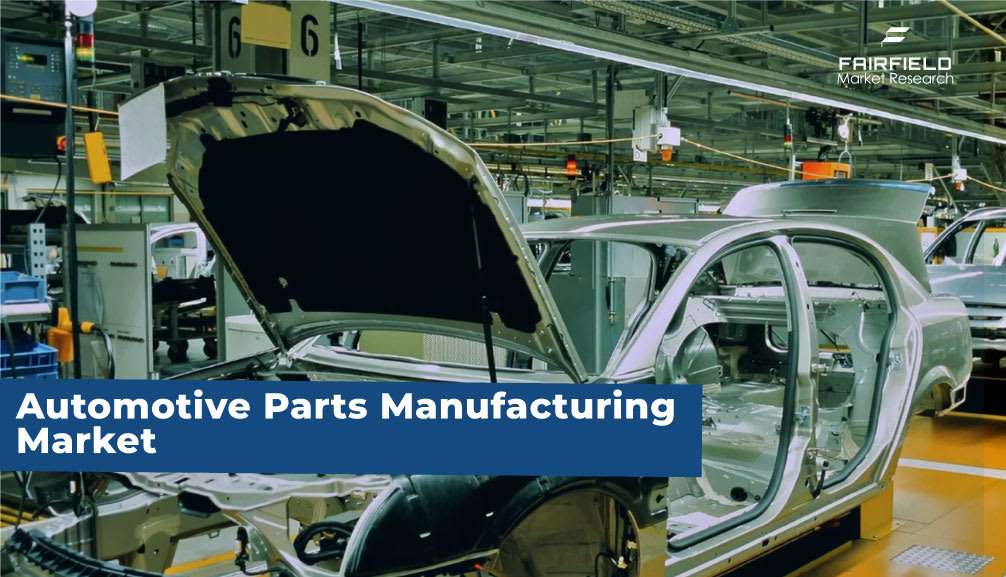The global automotive parts manufacturing market is undergoing significant transformation, shaped by technological innovation, evolving regulations, electrification, and shifting consumer demands. As the automotive industry pivots toward sustainability and digitalization, the market for vehicle components is poised for steady growth. According to Fairfield Market Research recent forecasts, the automotive parts manufacturing market is projected to rise from USD 579.27 billion in 2025 to USD 887.46 billion by 2032, expanding at a CAGR of 4.4% during this period.
Market Trends Driving Transformation
The automotive parts manufacturing industry is experiencing a pivotal shift toward localized production, automation, and sustainability. Innovations in forging, casting, injection molding, and 3D printing are enabling manufacturers to produce components more efficiently and with greater design flexibility. Injection molding, for example, is widely adopted for interior parts, offering lightweight and customizable solutions that meet the growing consumer demand for vehicle comfort and aesthetics.
Another major trend is the transition toward electric vehicles (EVs). The shift is creating opportunities for component manufacturers to develop specialized parts such as battery management systems, lightweight structures, and advanced electronic modules. The demand for high-performance batteries and electrified powertrain components continues to grow, reshaping traditional product lines.
At the same time, remanufacturing is emerging as a cost-effective and environmentally responsible practice. Companies are expanding offerings in remanufactured brake systems, drive trains, and electronics, reducing waste and strengthening aftermarket service networks.
Key Growth Drivers
1. Electrification of Vehicles
The rise of EVs is pushing manufacturers to redesign components and adapt production lines. New materials, precision electronics, and thermal management solutions are in high demand.
2. Expansion of Product Lines
Companies are broadening their portfolios to serve a wider range of vehicle types. For instance, ZF Aftermarket introduced 770 new parts in North America in early 2024, supporting nearly 158 million vehicles across combustion, hybrid, and electric platforms.
3. Rising Aftermarket Demand
Growing vehicle ownership, especially in emerging markets, is driving the need for affordable, high-quality replacement parts. The automotive aftermarket is a critical channel for both OEM and non-OEM suppliers.
4. Technological Advancements
Automation, AI-powered manufacturing, and 3D printing are improving operational efficiency and enabling rapid prototyping. These technologies are making it easier to customize parts while cutting production costs.
5. Regulatory and Policy Support
Government incentives such as the U.S. Inflation Reduction Act and India’s PLI Scheme for auto components are promoting local production and EV adoption, creating robust opportunities for suppliers.
Barriers and Regulatory Challenges
Despite the growth outlook, the industry faces regulatory headwinds, particularly around labor and trade. Stricter labor laws, such as those highlighted in the USMCA Rapid Response Labor Mechanism, require manufacturers to invest more in workforce compliance, training, and fair labor practices. Additionally, geopolitical tensions and changing trade agreements are influencing global supply chains, prompting companies to regionalize operations and mitigate tariff impacts.
Regional Market Insights
• Asia Pacific leads the global market with over 35% share, driven by high vehicle production in China, India, and Japan. Government-backed EV initiatives and affordable manufacturing conditions make the region a manufacturing hub for both OEM and aftermarket parts.
• Europe is focused on green technologies and premium automotive components, propelled by stringent CO₂ emission targets and consumer demand for high-quality electric vehicles. The EU’s “Fit for 55” climate package is a major policy pushing sustainable manufacturing.
• North America remains a tech-driven and innovation-heavy market. Strong government support, robust R&D infrastructure, and a mature automotive aftermarket help drive demand. The USMCA agreement is incentivizing localized sourcing and assembly to strengthen supply chains.
Key Players in the Automotive Parts Manufacturing Market
The market is highly competitive, with major players investing in advanced technologies, regional expansion, and sustainable manufacturing practices. Leading companies include:
• Robert Bosch GmbH
• ZF Friedrichshafen AG
• Magna International Inc.
• Denso Corporation
• Continental AG
• Hyundai Mobis
• Valeo
• Aisin Corporation
• Forvia (HELLA)
• BorgWarner Inc.
• Toyota Boshoku Corp.
• ACDelco
• Aptiv PLC
• Tenneco Inc.
• Akebono Brake Industry Co. Ltd.
These firms are at the forefront of shaping the industry through innovations in electrification, lightweighting, and digital manufacturing.
Get Sample Copy of Report at: https://www.fairfieldmarketresearch.com/report/automotive-parts-manufacturing-market/request-sample
